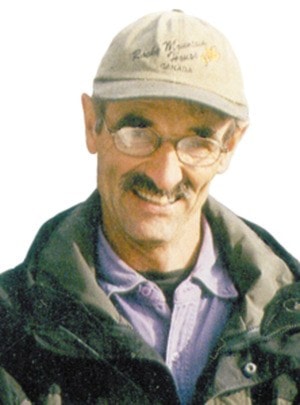Thus far, this winter season has seen the best snowshoeing and cross-country skiing conditions I’ve experienced in the Creston Valley since five or six years back. In the past few years, repeated freezing and thawing conditions have resulted in very small windows of opportunity. Skiing after a fresh snowfall is very popular with most people, but in recent years the opportunity has been cut short by subsequent thawing and sometimes freezing. This has eliminated the snow or made ski trails and snow surfaces very icy and rough if walked on by wildlife, dogs or humans. Then with each snowfall, there is snow clearing that needs to be done, postponing snow recreation to perhaps a day later.
Since the snow came this year, the temperatures in the valley bottom woodlands and meadows have been consistently below freezing, providing nice skiing conditions for over a month (and, hopefully for a few more weeks). In isolated spots, in residential areas, temperatures may have risen slightly above freezing but the temperatures in town and on benchlands are often higher than on the flats. So, thawing in town doesn’t necessarily mean there is thawing in Summit Creek areas.
If snow temperatures do get close to the thawing point, the snow may become a bit sticky even though it isn’t melting. Something happens here that causes the skis to “stick” or causes snow buildup on the bottom of the ski. When this happens, or I anticipate that to happen, I use a very inexpensive remedy – an application of paraffin or candle wax to the skis. It is the only kind of waxing I do. I use wax-less skis with feathered bottoms.
If you are using poles, be nice to them. A broken pole isn’t much use. I like bamboo poles and have broken a couple. Ski poles are made to push with, not to be used as a pry or to be stepped on. Some people snowshoe without poles but the use of poles is a must in sloped or steep areas, or in jumping from snow-covered rock to snow-covered rock to cross a creek. Otherwise, the one thing good about going pole-less is that it gives one more exercise! There is a rare breed of skier that goes pole-less and, for exercise, they get more for their money. When I forgot my poles or when I broke a pole and wasn’t able to find a replacement in the bush, I carried the other pole and skied pole-less. Fortunately the terrain was flat. However, the next day I discovered some muscles I didn’t know I had.
When I was forced to ski pole-less, I didn’t check to see how far apart my skis were but, theoretically speaking, they might have been a bit farther apart for more stability. A lot of people, including myself, unconsciously use the poles as braces while skiing along – sticking them out to the side like wings. To distribute the effort and to round out the exercise one ideally should push straight back with the poles thus giving the upper body some exercise and taking the strain off the legs. The most effective push is gained by pushing straight back from the side with the pole. Don’t expect immediate results, other than sore arms and shoulders. Give them a break and then practice it again the next time out.
I can think of three ways people use to turn around. One is the loop turn, where the skier skis in a loop. The second involves a skier sidestepping until in the reverse position and creating a half a sunflower pattern in the snow. In the third type the skier reverses direction by turning one ski at a time while balancing on the other ski and poles. This is a bit tricky for some people. It requires flexibility and practice. A turn to the right begins with lifting the right ski and swinging it around, placing it beside the other ski. Shorter skis, as well as downhill skis, are much easier to turn this way. I think downhill skiers are experts at this (Warning: Not recommended for those who laugh a lot and /or those who aren’t equipped with rubber hips and knees!)
Another two issues with cross country skiing, or for that matter with any winter outdoor activities, are getting back up if you crash and keeping warm. If you crash on a slope it is much easier to get up but either way get your feet and skis together and swing them around to a downhill position or if possible lower than the body. Roll unto the skis using the spaced poles to push in the opposite direction with legs and skis tucked up close to the body. By following this, the crash victim may be more efficient and even dignified about getting back on their feet.
Keeping warm is probably a little trickier when skiing snow conditions are good because the weather is colder. Keep the head, hands and hooves cozy to be able to stay out longer. You can keep hands much warmer if you wear mitts, where the fingers can be friendly. One loses at least 70 percent body heat through the head. One can keep the body and hands and feet warmer by wearing adequate headgear. To help keep the feet warm one might need to wear slightly larger ski boots to be able to wear a heavier socks or an extra pair. Be sure your feet aren’t sweaty or cold when donning the boots. A seemingly unrelated aspect of staying warm is to improve the circulation by maintaining a healthier lifestyle, by cutting coffee, tea and smoking and animal protein in half (North Americans eat twice as much protein than they need.) Add daily exercise to the menu.
Make use of the snow while it lasts, by skiing and snowshoeing and even by shoveling it! With any of these activities, one gets a good dose of fresh air and exercise!
